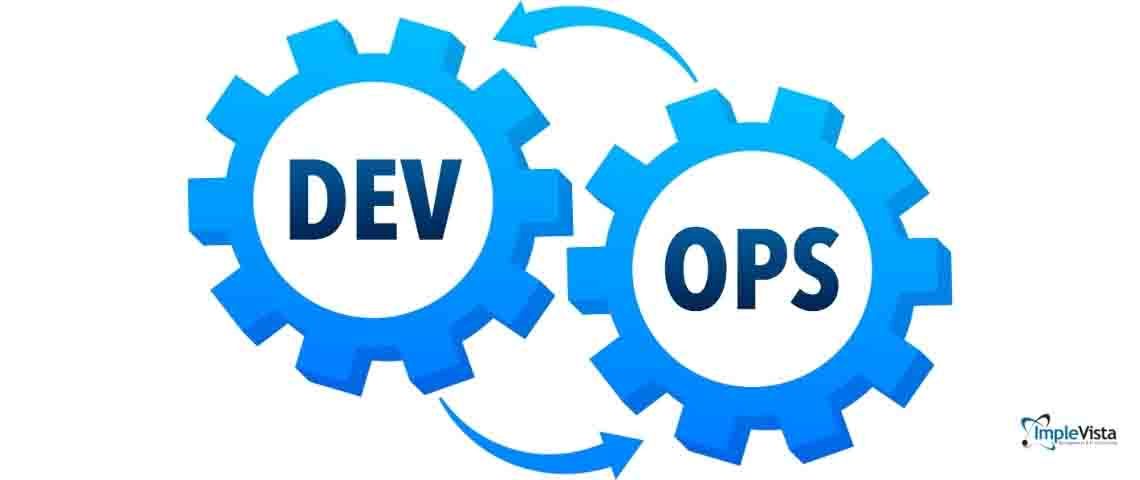DevOps is the modern software culture that unites development (Dev) and operations (Ops) into a seamless workflow. It emphasizes automation, collaboration, and continuous improvement to speed up software delivery. Today, DevOps is essentially an industry standard: recent research finds that about 83% of developers engage in DevOps practices, reflecting a broad shift toward integrated, automated development pipelines.
By embracing DevOps and automated CI/CD (Continuous Integration/Continuous Delivery) pipelines, organizations dramatically reduce release cycle times, cut manual errors, and unlock huge productivity gains. For example, one study showed that optimizing deployment workflows across 1,000 developers can generate roughly $7.9 million in annual productivity benefits. In this article, we explain what DevOps and CI/CD are, explore their key benefits for software development, and show how Implevista’s DevOps solutions help clients deliver software faster and more reliably.
What is DevOps and Why It Matters
DevOps is a culture and set of practices that break down silos between software developers and IT operations teams. In a DevOps culture, DevOps developers and operations staff work together from project inception through delivery and maintenance. The goal is to automate as much of the software lifecycle as possible, enabling continuous testing, integration, and deployment. Key principles include:
- Collaboration and communication: Cross-functional teams (developers, QA, and operations) share responsibility for delivering quality software.
- Automation: Manual, repeatable tasks (builds, tests, deployments) are automated with scripts and tools.
- Continuous feedback: Monitoring and real-time feedback ensure that issues are caught early.
- Rapid iteration: Smaller, frequent releases rather than large, infrequent ones.
These DevOps services and solutions help companies respond faster to market demands. For instance, Implevista’s Software Development Team service implements DevOps practices to accelerate clients’ projects. By automating infrastructure and testing, teams spend more time adding new features and less time on manual tasks. As Implevista notes in a blog on remote software development, investing in “cloud-based IDEs, CI/CD platforms, and DevOps tools” is essential to streamline the development pipeline.
The impact of adopting DevOps is measurable. High-performing DevOps organizations deploy code 46× more frequently and have 7× lower change failure rates than low-performing teams. In other words, elite teams release updates in minutes or hours rather than months, and when problems occur, they can recover thousands of times faster. This translates into enormous time savings and cost reductions. No wonder 83% of developers today routinely carry out DevOps activities as part of their work. In short, DevOps is not just a buzzword — it’s a proven strategy for faster, more reliable software delivery.

Continuous Integration (CI) and Continuous Delivery (CD)
At the heart of DevOps are the CI/CD pipelines. These automated pipelines handle code integration, testing, and deployment so that changes flow smoothly from developers to production. We break these concepts down:
- Continuous Integration (CI): Developers commit code frequently (often multiple times per day) into a shared repository. Each commit automatically triggers a build and a suite of automated tests. CI ensures that integration issues are caught early – before code piles up. By running tests on every change, teams avoid the “integration hell” of last-minute fixes, and bugs and errors are detected as soon as possible.
- Continuous Delivery/Deployment (CD): Once code passes CI, Continuous Delivery automatically packages and prepares it for release. Continuous Deployment goes a step further by automatically deploying the code to production (or staging) environments. In both cases, the pipeline orchestrates all steps (building, testing, deploying), so releases become routine. This means teams can release smaller updates more frequently, and rollback is just a click away if needed.
CI/CD pipelines bring many developer benefits:
- Faster feedback loops: Every code change is tested immediately, so developers know right away if something breaks.
- Reliable builds: Builds run the same way every time, eliminating “works on my machine” issues.
- Consistent deployments: Infrastructure-as-code and scripts ensure the environment is consistent across dev, test, and production.
- Rapid releases: With everything automated, teams can deploy updates multiple times a day instead of every few weeks.
By automating the release pipeline, teams “cut down on release cycle time” and alleviate many of the issues that arise from manual deployments. It also means fewer manual errors: as one analysis notes, automating releases “reduces the number of issues caused by human mistakes,” leading to higher-quality deployments. In effect, every new commit quickly becomes validated and ready to ship, so customer feedback can be incorporated continuously.
DevOps solutions are incomplete without CI/CD. A robust CI/CD pipeline might use tools like Jenkins, GitLab CI, Azure DevOps, or CircleCI. Implevista builds such pipelines for clients, ensuring that integrations and tests run automatically on each code merge. The result is a faster, more predictable delivery process. Because automation is in place, downtime is minimized and code releases happen faster, letting teams focus on innovation.
Benefits of DevOps with CI/CD
Implementing DevOps and CI/CD brings tangible benefits for clients:
- Shorter Time-to-Market: Automated pipelines mean new features and fixes reach users in days or hours, not months. Smaller, frequent releases reduce risk. For example, Implevista’s clients using CI/CD can ship product updates weekly or even daily, staying ahead of competitors.
- Fewer Errors and Failures: With continuous testing in place, bugs are caught during development, not in production. Industry experts point out that automating the release pipeline “can reduce the number of issues caused by human mistakes”. This leads to higher-quality software and fewer rollbacks.
- Higher Productivity: Developers spend less time on manual tasks (building, configuring, deploying). By “shifting left” and automating, teams reclaim hundreds of hours. One analysis showed that even a 15% improvement in deployment efficiency for 1,000 developers frees up about 158,000 hours per year – roughly $7.9 million in value. Another found that a 500-developer organization could save almost $7.9M annually by cutting wasted efforts. In practice, this means the team can work on more innovations instead of fixing integration issues.
- Better Collaboration: DevOps breaks down silos. Developers, QA, and operations share the same pipeline, tools, and goals. This transparency improves communication and accountability. Even remote teams can stay in sync by using cloud-based CI/CD platforms and shared dashboards.
- Scalability and Flexibility: Automated pipelines make it easy to scale. As the business grows, the same CI/CD setup can handle more projects. When priorities change, a well-architected pipeline lets the team pivot quickly, deploying hotfixes or new features with minimal friction.
- Continuous Improvement: With DevOps metrics (deployment frequency, lead time, change failure rate), teams can measure and improve their process. Data-driven insights help fine-tune the pipeline for even faster delivery.
DevOps services and solutions like automated CI/CD pipelines turn development into a repeatable, reliable process. High-performing DevOps organizations deploy 46× more often and recover from failures thousands of times faster than traditional teams. That performance edge translates to happier customers and a stronger bottom line.

Real-World Impact and ROI
The business impact of DevOps is clear. Consider the ROI: studies have quantified the gains from streamlined DevOps. For example, one analysis calculated that a 15% productivity improvement in deployment tasks (via better CI/CD) could free 158,000 developer-hours per year for 1,000 developers – worth roughly $7.9 million annually. In practical terms, automating pipelines, standardizing tools, and reducing manual toil can pay for themselves many times over.
Even anecdotal evidence aligns. Atlassian notes that just a 10-hour/week waste per engineer (in a 500-developer firm) adds up to about $7.9M lost each year. Fixing inefficiencies with DevOps can recoup those losses. In another example, a U.S. financial services firm switched to CI/CD and saw its release cycle shrink from months to minutes, slashing time-to-market by over 90%.
Implevista’s clients often see similar benefits. For instance, our own travel-management product IV Trip illustrates the value of DevOps. IV Trip is designed to “streamline operations, provide better customer experiences, and grow business”. By using automated build and deploy pipelines, the IV Trip team can update features weekly with minimal downtime – a level of agility and reliability that was unattainable with ad-hoc releases. Clients using IV Trip experience faster booking updates, fewer system issues, and more trust in the platform.
Summary of key ROI factors:
- Cost savings: Fewer fire-fights, less emergency maintenance, and reduced manual labor.
- Revenue acceleration: Faster feature delivery means faster revenue realization (e.g. new capabilities or fixes are available to customers quickly).
- Employee efficiency: Developers and DevOps engineers spend 20–30% of their time on useless toil; DevOps can cut that dramatically.
- Customer satisfaction: Reliable, frequent updates keep customers engaged and satisfied, reducing churn.
These gains compound over time. The initial investment in DevOps automation quickly returns multiple times as software quality and delivery speed improve.
Implementing DevOps and CI/CD: Best Practices
To realize these benefits, organizations must implement DevOps thoughtfully. Here are key practices for success:
- Start with Culture: Dev,Ops is as much about people as technology. Encourage open communication between dev and ops teams. Break projects into cross-functional teams that share goals. Train DevOps engineers to bridge development and operations skills.
- Automate Everything: Identify repetitive tasks (builds, tests, deployments) and automate them. Use a version control system and ensure all code, configurations, and infrastructure definitions live in code (git repos, Terraform, etc.). Implevista often sets up pipelines on tools like Jenkins, GitLab, or GitHub Actions to automatically run unit tests, integration tests, and deployable builds on every commit.
- Shift-Left Testing: Integrate testing early. Include unit, integration, and security tests in the CI process. Implevista’s QA teams build automated test suites so that every build verifies code correctness and security. This “shift-left” approach means most bugs are caught before they reach staging or production.
- Use DevOps Tools: Invest in robust CI/CD platforms. Even on small projects, tools like Docker and Kubernetes can make deployments consistent. Monitor pipelines and applications with logging and alerting (e.g. Prometheus, ELK). Implevista often integrates infrastructure monitoring so that anomalies trigger quick responses.
- Incremental Improvement: You don’t have to automate everything overnight. Start by automating the build and main test suite. Then gradually add deployments and advanced steps (canary releases, blue-green deployments). Measure each improvement: track metrics like deployment frequency and lead time to demonstrate progress.
- Leverage Cloud and Platform Engineering: Modern Dev,Ops often relies on cloud platforms (AWS, Azure, GCP). Use managed CI/CD offerings (Azure Dev,Ops, GitHub Actions, AWS CodePipeline) to reduce setup time. If budgets allow, build internal platform teams to manage shared tooling for developers. Implevista’s cloud engineering services help clients set up secure, scalable platforms so developers can deploy at any time.
- Documentation and Training: Document your CI/CD pipelines and best practices. Ensure team members know how to use the tools. Continuous learning is key; technologies evolve, so Dev,Ops teams must keep up with new practices (e.g. GitOps, site reliability engineering).
Implementing these steps creates a “virtuous cycle” of continuous improvement. As Implevista notes, embracing Dev,Ops tools and pipelines “enhance[s] productivity” even for remote or distributed teams. By the time you finish one development sprint, the CI/CD system has already tested and prepared your code for release. This efficiency not only makes developers happier but also keeps stakeholders confident that delivery deadlines will be met.

Real-World Impact of DevOps and CI/CD
Consider these industry benchmarks:
| Metric | Without DevOps | With DevOps |
| Deployment frequency | Monthly | Multiple per day |
| Lead time for changes | Weeks | <1 hour |
| Change failure rate | 45% | <10% |
| Recovery time from failure | Days | Minutes |
Tools Commonly Used in DevOps & CI/CD
| Category | Popular Tools |
| Version Control | Git, GitLab |
| CI/CD Pipelines | Jenkins, GitHub Actions, GitLab CI |
| Containers | Docker, Podman |
| Orchestration | Kubernetes, Helm |
| Monitoring | Prometheus, Grafana, New Relic |
| IaC | Terraform, Ansible |
| Testing | Selenium, JUnit, TestNG |
How Implevista Implements DevOps Solutions
At Implevista, we provide tailored DevOps services and solutions that meet the unique needs of startups, SMEs, and enterprise clients.
Step-by-Step DevOps Implementation:
- Assessment & Strategy
- Infrastructure and team audit.
- Dev,Ops readiness assessment.
- Toolchain selection.
- CI/CD Pipeline Setup
- Tools like GitLab CI, Jenkins, CircleCI.
- Test automation and container orchestration (Docker, Kubernetes).
- Infrastructure as Code (IaC)
- Terraform, Ansible for automated provisioning.
- Fast, replicable environments.
- Monitoring & Security
- Integration with Prometheus, ELK stack, and Datadog.
- DevSecOps practices for secure deployments.
- Training & Handover
- Developer onboarding.
- Documentation and workflow design.
Continuous Delivery Yields Competitive Advantage
Dev,Ops with CI/CD is a competitive weapon. Companies that master Dev,Ops move faster than their competitors. They can respond to market changes immediately, roll out bug fixes swiftly, and deliver new features that delight customers. In highly regulated or high-availability environments, automated pipelines also mean compliance and rollback are built-in – reducing risk.
In contrast, organizations without DevOps face painful, infrequent “release days” and firefights. Software updates become risky projects rather than routine tasks. By adopting DevOps solutions and services, businesses avoid these bottlenecks. Whether you’re a startup scaling up or an enterprise modernizing legacy systems, DevOps with CI/CD pays off.
At Implevista, we specialize in guiding clients through this transformation. Our Software Development teams build custom CI/CD pipelines as part of our development services【109†】. We also help integrate Dev,Ops into broader strategies like cloud migration or digital product launches. The proof is in the results: faster delivery, higher quality, and a measurable ROI.
Ready to accelerate your projects with DevOps?
Contact Implevista’s experts today to learn how our DevOps services and CI/CD solutions can streamline your software delivery. Explore our Development Team services for custom software and pipeline development, or Contact us to start a conversation. Don’t forget to subscribe to our blog for more Dev,Ops insights, and check out our related article “Quality Assurance Promise – Delivering Excellence” to see how we ensure every release meets high standards.

FAQ
Q: What is DevOps?
DevOps is a software culture that unites development (Dev) and IT operations (Ops). It emphasizes automation of the software lifecycle, continuous delivery, and close collaboration between teams. The result is faster, more reliable DevOps software development and deployment.
Q: What are CI and CD?
Continuous Integration (CI) means automatically building and testing code every time a developer commits changes. Continuous Delivery/Deployment (CD) means automatically deploying that code to production (or a staging environment) after it passes CI. Together, CI/CD pipelines ensure rapid, error-free releases.
Q: How does DevOps shorten release cycles?
DevOps automates integration, testing, and deployment tasks with CI/CD pipelines. Instead of manual hand-offs and long waits between releases, changes go through automated checks and get deployed immediately. Industry experts note that automating the release pipeline “cuts down on your release cycle time”, letting teams ship updates in hours or days instead of weeks.
Q: How does CI/CD reduce errors?
In a CI/CD pipeline, code is built and tested automatically on every commit. Automated unit, integration, and regression tests catch bugs early. Manual deployment steps (where errors happen) are eliminated. As one analysis observes, automation “reduces the number of issues caused by human mistakes”. Fewer manual steps means fewer mistakes slipping into production.
Q: What percentage of developers use DevOps?
DevOps has become mainstream: about 80–83% of developers now routinely perform DevOps activities at work. This high adoption rate shows that continuous integration and delivery are now the standard approach for modern software teams.
Q: What ROI can DevOps deliver?
Studies show huge ROI from Dev Ops productivity. For example, improving deployment efficiency by just 15% across 1,000 developers can free up ~$7.9 million per year in time saved. Faster releases also accelerate time-to-revenue. In practice, teams often recoup the cost of DevOps automation in months through these savings.
Q: What skills does a DevOps engineer need?
A Dev Ops developer typically needs software development skills plus knowledge of infrastructure and automation tools. Key skills include version control (Git), CI/CD tools (Jenkins, GitLab CI, etc.), scripting for automation, containerization (Docker, Kubernetes), and cloud platforms (AWS, Azure, GCP). They also need strong collaboration and communication skills to bridge teams.
Q: How do I start implementing Dev,Ops?
Begin by automating a simple pipeline: set up version control and continuous integration (auto-build and test). Gradually add deployment automation. Encourage collaboration between dev and ops, and use tools like containers and cloud services. Measure metrics (deployment frequency, lead time) to track improvement. Implevista advises taking an incremental approach: even starting with automated unit tests significantly reduces manual work.
Q: What’s the difference between Agile and DevOps?
Agile is a development methodology emphasizing iterative development and customer feedback, while DevOps is focused on automating the delivery and operations of software. In practice, Agile and Dev,Ops complement each other: Agile teams write code in sprints, and DevOps ensures that code moves smoothly into production.
Q: How does DevOps help with quality assurance?
DevOps integrates QA into the pipeline. Automated tests (unit, integration, performance, security) run as part of CI/CD, catching defects early. Implevista’s QA philosophy embeds testing at every stage. By treating QA as a continuous process rather than a final phase, Dev,Ops ensures higher-quality releases and builds customer trust.
Q: How can I learn more or get started?
Check out Implevista’s blog and resources. Read our posts on DevOps culture and CI/CD pipelines, and consider contacting Implevista for a consultation. We offer DevOps consulting and development services to help companies adopt these practices successfully.




